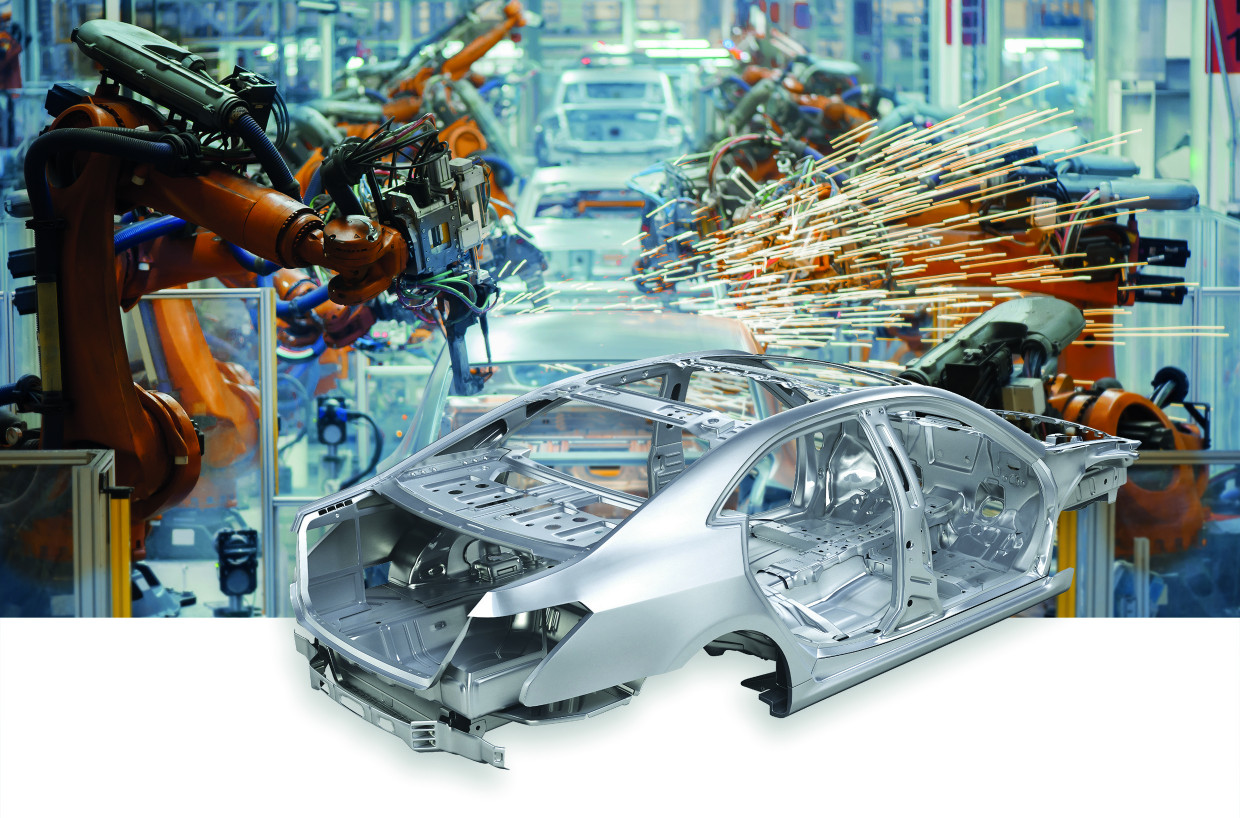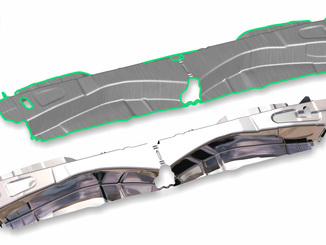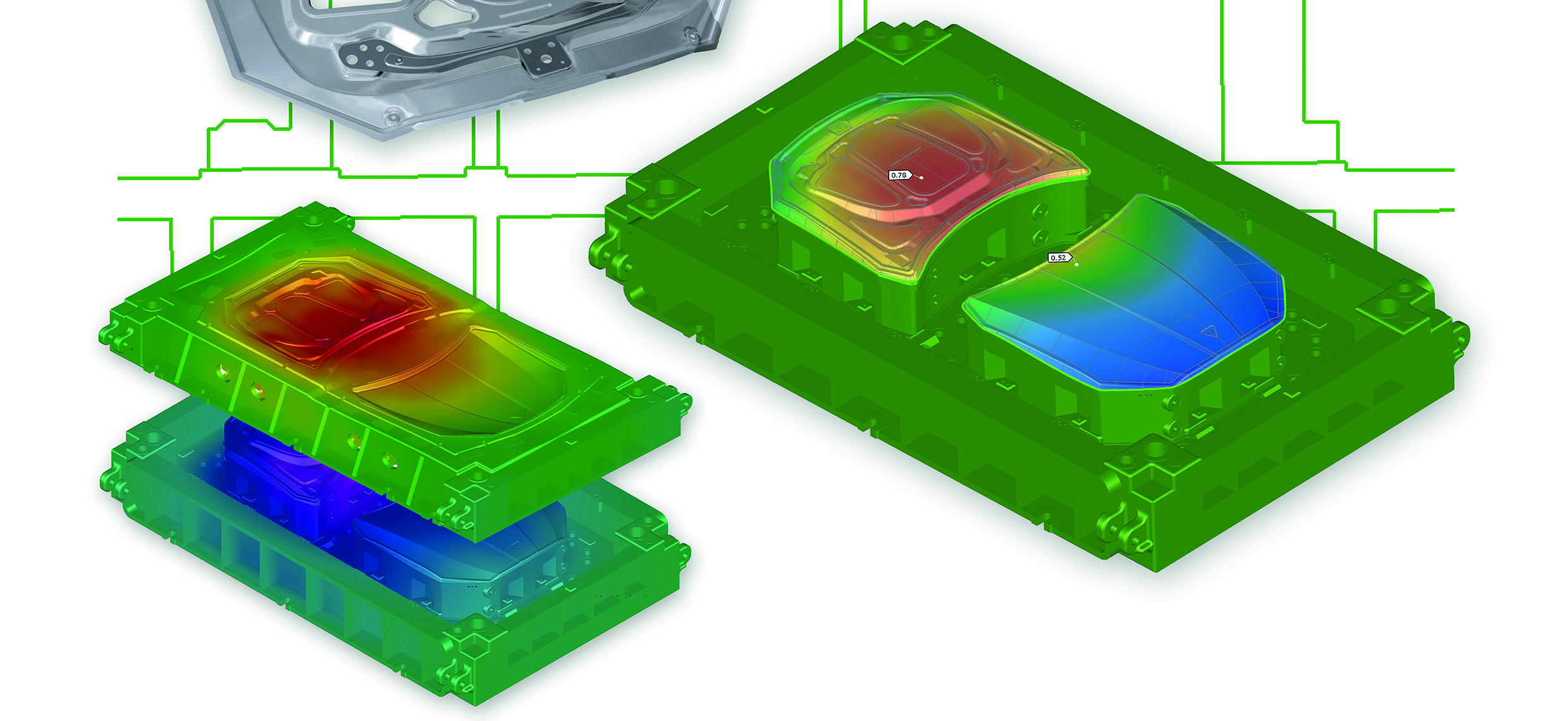Im Rahmen einer Schulung zu AutoForm Forming, die AutoForm auf Class-A-Flächen ausgerichtet hat, konnte das Werkzeug für ein Grauzonenteil im ersten Schuss simuliert und gefertigt werden.
© Wesoba/AutoForm
Wesoba uses AutoForm simulation tools to systematically safeguard toolmaking right through to tryout. This enables the company from Schwarzenberg in the Ore Mountains to produce the first component more quickly and to plan reliably and cost-effectively.
This cast blank is used to produce the tool for a wheel arch, for which Wesoba has compensated the springback with the AutoForm compensator. During a training course on springback compensation with the AutoForm Compensator, a first project was immediately implemented and the compensation for a wheel arch was realized step by step. Leonard Krauss, Georg Pfaff and Christian Pfaff (from left) work together on a process in which – in future with other AutoForm tools – model and practice are superimposed more and more precisely. www.autoform.com







